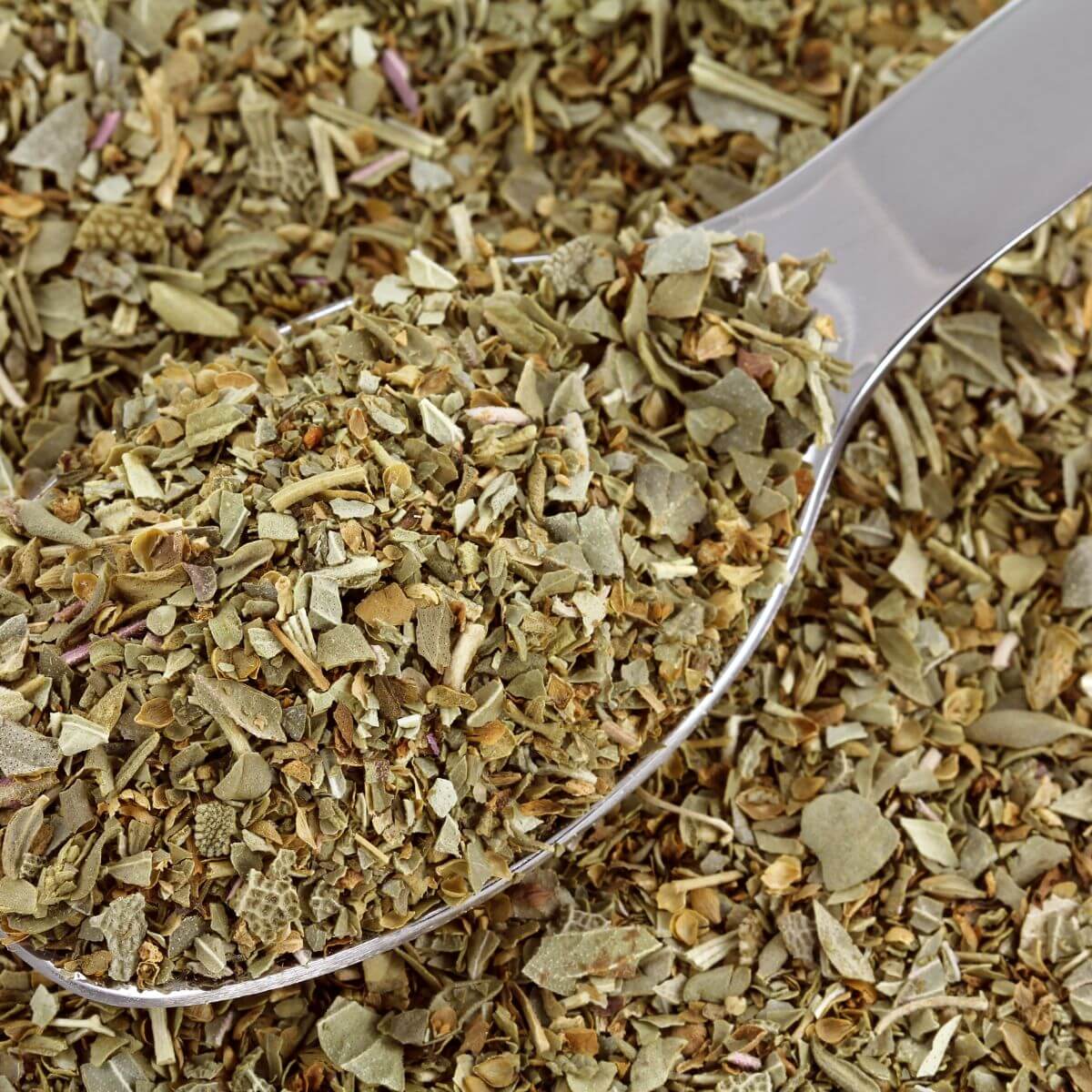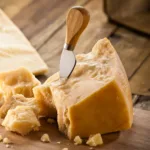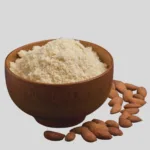Finding the perfect Italian seasoning substitute can be a game-changer for home chefs and cooking enthusiasts aiming to capture the essence of Italian cuisine without the traditional blend. Whether you’ve run out of Italian seasoning or are looking to customize your dishes with a more personal touch, knowing how to substitute this classic herb mix can elevate your cooking. In this blog, we dive into the art of replicating the rich, aromatic flavor profile of Italian seasoning using readily available herbs and spices.
1. Herbes de Provence
Herbes de Provence is a versatile seasoning blend similar to Italian seasoning. As the name suggests, this herb blend originates from the sunny region of Provence, France. It consists of a fragrant blend of dried herbs commonly found in Mediterranean cuisine, including:
Just a look at the ingredients would help you understand why Herbes de Provence is a perfect substitute for Italian seasonings. The two blends share similar flavor profiles due to the presence of herbs like thyme, rosemary, and oregano.
These herbs offer a robust and aromatic taste reminiscent of the Mediterranean countryside. There are also savory, earthy, and floral notes, making them compatible with various dishes.
Herbs de Provence can be used in a wide range of dishes, much like Italian seasonings. Sprinkle it over roasted vegetables, chicken, or fish to impart a delightful Mediterranean flavor. It also enhances the taste of soups, sauces, and dressings, infusing them with a savory depth.
2. Homemade Italian Seasoning
Creating your Italian seasoning blend at home is not only simple but also allows you to tailor the flavor to your liking. Most ingredients required for Italian seasonings are likely already sitting in your pantry, making for a budget-friendly substitute!
Traditional Italian seasoning blends typically include a combination of dried basil, thyme, oregano, and marjoram. Additionally, some blends incorporate onion powder, garlic powder, celery salt, and black pepper to further enrich the seasoning.
To make an Italian seasoning blend, gather the desired herbs and spices in the proportions that appeal to you. A typical ratio is one part each basil, oregano, and thyme, and 1/2 part marjoram. Then, add small amounts of onion powder, garlic powder, and black pepper until you get the desired flavor.
If you’re unsure about the proportions of ingredients to use, you can always refer to the label of your favorite store-bought Italian seasoning blend.
You can use your homemade Italian seasonings similarly to how you use store-bought blends. It’s perfect for pasta sauces, marinades, soups, and more!
3. Fresh Herbs
Just as you can use dried herbs in your spice cabinet to create an Italian seasoning blend, you can also go for fresh herbs. Their vibrant flavors and aromas can elevate any recipe, similarly to their dried counterparts.
Fresh herbs shine in cold dishes such as salads, dips, and dressings, where their crispness and brightness can truly be appreciated. Whether it’s a basil-infused caprese salad or a parsley-laden tzatziki dip, fresh herbs add an unmatched burst of flavor.
For hot foods like soups, stews, and sauces, it’s best to add fresh herbs towards the end of the cooking process to preserve their delicate flavors. This ensures that their essence is not lost in the heat, allowing you to enjoy their full aroma.
When substituting fresh herbs for dried ones, keep in mind the potency difference. As a general rule of thumb, use a ratio of 3 parts fresh herbs to 1 part dried herbs. This accounts for the concentrated flavor of dried herbs.
4. Za’atar
Za’atar offers a unique and flavorful alternative to traditional Italian seasonings, complementing many dishes. It contains some similar ingredients to Italian seasoning, such as thyme and oregano.
Yet, za’atar also has additional earthy notes from the cumin, coriander, and sesame seeds. This combination results in a complex flavor profile that’s savory and slightly nutty, with a hint of citrus.
Za’atar is a versatile seasoning that can be used in numerous ways. It’s commonly sprinkled over flatbreads, such as pita or focaccia, before baking, adding a deliciously fragrant topping. It can also be mixed with olive oil to create a flavorful dip for bread or drizzled over roasted vegetables for an extra punch of flavor.
5. Greek Seasoning
Greek seasoning is Italian seasoning with a twist. The two blends share ingredients and flavors while incorporating their unique blend of herbs and spices.
In terms of the herbs used, both blends often feature oregano and thyme, which contribute to their Mediterranean flavor profiles. However, Greek seasoning can also include additional herbs like mint and dill, adding complexity and freshness to the mix.
Greek seasoning is incredibly versatile and can be used in various dishes to impart its distinctive flavor. It’s usually used as a dry rub for grilled or roasted meats, such as lamb or chicken.
You can use Greek seasoning on any dish you’d typically use an Italian seasoning blend. It can be sprinkled over roasted vegetables, added to soups and stews, or mixed into dips and dressings for an extra punch of flavor.
6. Pizza Seasoning
Pizza seasoning offers a delicious twist on traditional Italian seasonings. With a blend of aromatic herbs and spices, it’s tailor-made to enhance the flavors of everyone’s favorite comfort food.
Since pizza is stable in Italian cuisine, it’s only natural that pizza seasoning shares many similarities with Italian seasoning, including ingredients. Common ingredients include dried oregano, basil, thyme, garlic powder, onion powder, and crushed red pepper flakes.
A couple of different ingredients are the red pepper flakes and garlic powder. This blend delivers a robust flavor profile with savory, herbaceous, and slightly spicy notes similar to classic Italian pizzas.
The versatility of this seasoning blend extends beyond just pizza. While it’s a perfect addition to homemade pizza dough or sprinkled over pizza sauce, it can also be used to elevate pasta sauces, garlic bread, roasted vegetables, or even popcorn for an Italian-inspired twist.
7. Italian Salad Dressing Seasoning
Italian salad seasoning offers a delightful blend of herbs and spices made specifically for salads, infusing them with the classic flavors of Italian cuisine.
Italian salad seasoning typically includes a mix of dried herbs such as basil, oregano, and thyme, along with garlic powder, onion powder, and black pepper. Since it has many similar ingredients to Italian seasonings, they can be used interchangeably!
For those who enjoy experimenting with flavors, making your own Italian salad seasoning blend is simple and fun. You can even create a spice blend that doubles as both Italian and Italian salad dressing seasoning.
Combine dried herbs and spices according to your taste preferences, adjusting the ratios to create a personalized blend that suits your palate. Then, store it in an airtight container.
Related Content
7 Xanthan Gum Substitutes
13 Almond Meal Substitute Options
6 Red Wine Vinegar Substitutes
7 Dijon Mustard Substitutes
Have questions or suggestions about these Italian seasoning substitutes? Leave them in the comments below.












